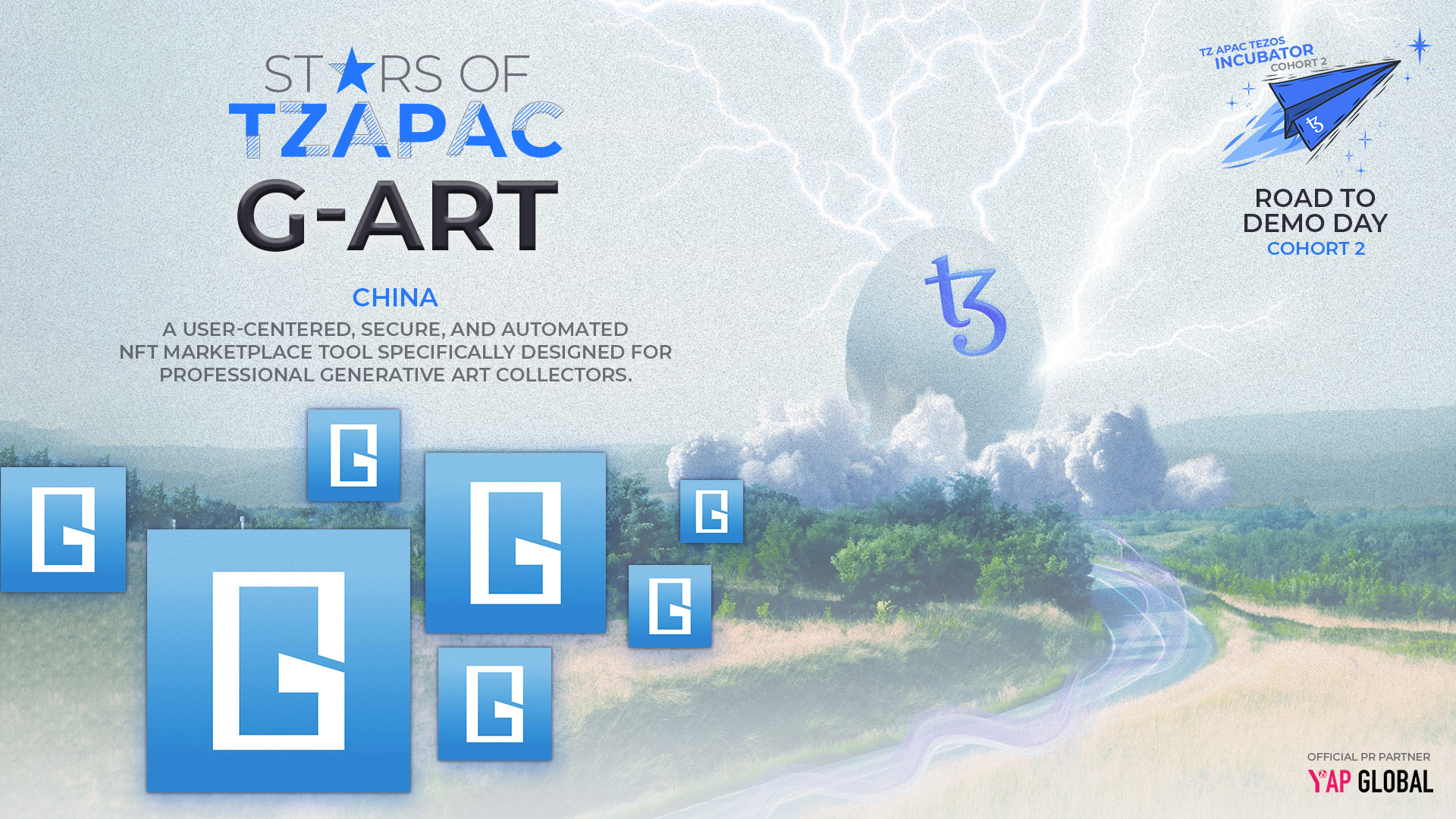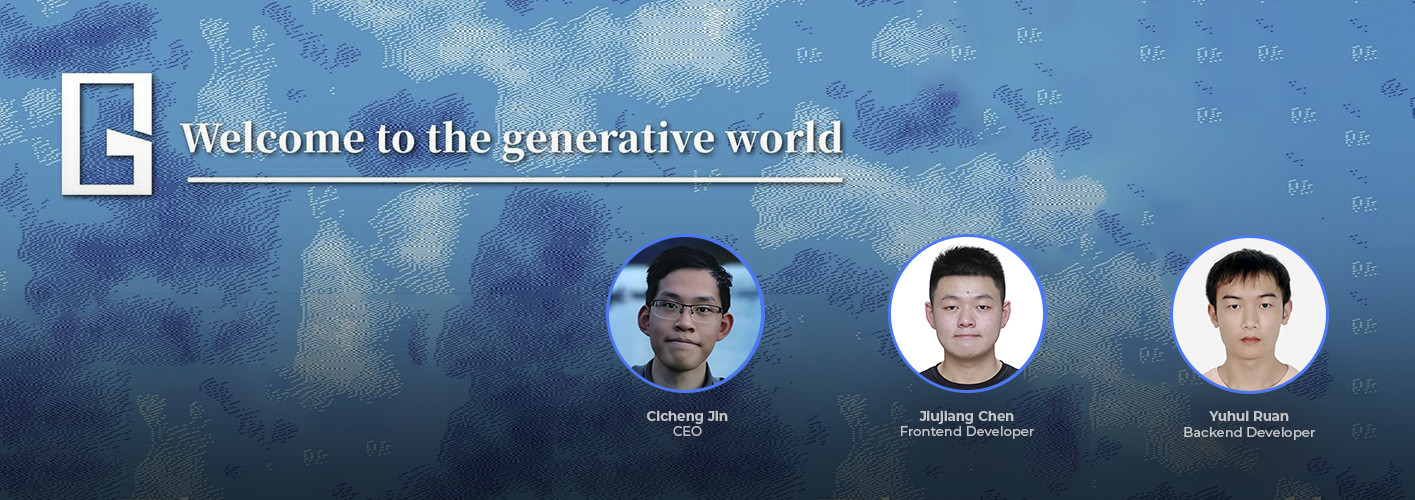IN
IN
JPN
EN
Join Our Communities

Art, as we know it, is evolving. The advent of A.I. tools like Midjourney and DALL-E has sparked a fascinating conversation - can the output of these tools be considered art?
A compelling answer lies in the form of generative art, a form of artistry where the final product is determined by a system or set of rules, often an algorithm, that offers a compelling answer. The beauty of generative art lies not just in the end product, but in the process — the rules, systems, and algorithms that breathe life into the artwork. It’s a testament to the powerful synergy between human creativity and technological innovation.
While generative art has recently been brought to the limelight by A.I. generators, not many are aware of its rich history. One of the earliest examples dates back to 1972, when Mozart created a musical game where dice rolls decided which fragments of music would be used to complete a piece.
Fast forward to today, and generative art has found a perfect home in the world of blockchain and NFTs. Leading the charge is the Tezos ecosystem, which has cultivated a vibrant community of artists and collectors.
The Tezos blockchain makes generative art more accessible with its low transaction fees and energy-efficient technology. Showcases of generative artwork created on Tezos have featured at globally prominent events like Art Basel and Crypto Art Week Asia. This active support and passionate community have fostered a thriving generative art scene within the Tezos ecosystem.
Another action-packed day here at the @tezos exhibition at @artbasel Hong Kong! Visitors are purring about the newly-minted NFTs.
— TZ APAC (@TzApac) May 28, 2022
We're going to be here till 6pm tomorrow, so don't miss the chance to mint one of these breathtaking NFTs! pic.twitter.com/KdvHb4JyyW
The potential of the generative art market is immense. As more artists and collectors discover the unique allure of these algorithmically created works, the market is set to expand.
However, it’s not without its growing pains. Admittedly, the current landscape is fragmented across marketplaces, the user experience could use some polish, and liquidity can always be improved. But where some see challenges, others see opportunity.
This is where Gart steps in - a specialized NFT aggregator designed specifically for the generative art market; a solution that understands the unique needs and challenges of this market and is built to address them head-on.
Gart isn’t just about providing information; it’s about making that information accessible and easy to understand. It offers comprehensive intelligence on major NFT projects, and provides email alerts when transactions or updates happen for projects users are interested in.
This process is taken a step further, with another of Gart’s killer features - a bot that automates the minting and trading process. Users can set their own mint and trade strategies, and carry on about their day (or night) while Gart takes care of the rest.
Of course, access to these incredibly powerful tools have to be limited to avoid distilling the value it provides to users. Access will be limited to Gart’s Pass Holders, which can be rented out. This model offers a win-win relationship between holder and renter, and monetizes the high demand for Gart’s features.
Gart also introduces a token incentive system that rewards flippers who provide offers and list NFTs. This innovative approach encourages chain activity, boosting liquidity and creating more opportunities for artists and collectors.
Gart supports both the Tezos and Ethereum blockchains, bridging the gap between these two vibrant ecosystems. This dual support allows Gart to tap into a larger pool of artists and collectors, fostering a more diverse and dynamic market.
Users can access a personal homepage which displays all relevant information at a glance, including a breakdown of the user’s assets across marketplaces. Through accessing on-chain data, Gart can present the total value of the user’s assets.
Users can also track the revenue they have made in their generative art NFT journey so far - the user’s historical transaction records are taken into consideration alongside the total value of the user’s existing collection.
Upcoming project mints will be displayed in a Mint List, along with detailed information such as the artist, remaining time, mint progress, and real-time recommended gas calculation. There is also a Twitter Popularity Index, which extracts data from the artist’s Twitter account to reflect overall user sentiment.
From this list, users can select the upcoming mints they’re interested in and add them to a personal Mint Schedule. Gart will display this in the user’s native time zone, and send an email reminder before the mint.
Being aware of an ongoing mint is just the first step. After selecting a project they’re interested in minting, Gart’s bot will automatically mint for them. Using a Dutch Auction process, the bot will automatically calculate the most appropriate purchase price and gas. Users can set their own parameters like maximum auction and gas preferences, allowing them to define their own automated minting strategy.
Gart offers comprehensive intelligence on major NFT projects. Users can sort and filter these projects based on their preferences, including feature-based filtering which recommends generated works based on similar features.
The data displayed includes:
After setting alerts for projects they are interested in, users can receive email notifications like:
For secondary market trading, users can set various parameters and Gart’s platform will execute these trades when these conditions are met.
Features include:
Gart offers users the flexibility to choose between English and Dutch auction styles, as well as reserve and no-reserve auctions. This caters to a variety of trading strategies and preferences.
But it’s not just about providing options; it’s about enhancing them. Gart’s delegated trading feature can be applied to the auction section. If a work’s transaction price in an auction falls below the user’s set purchase delegation price, a bid will automatically be placed in the final stage.
It’s a smart, automated approach that takes the guesswork out of bidding and maximizes opportunities for users.
Gart offers three levels of access - Free, Premium, and Professional.
By purchasing the Premium Pass, Gart users can enjoy additional access to all secondary market instruments.
The Professional Pass gives users additional access to all primary and secondary market instruments. Access to the Professional Pass is limited, and sold Dutch-Auction style.
Given the incredible advantage that Gart’s Mint Bot offers (especially for massively popular projects), the number of users with access needs to be limited - hence why Gart is adopting a Dutch-Auction style limited edition phased release.
Only a small number of Professional Passes will be released for circulation in the market. This allows the first Professional Pass holders to generate returns from renting the Passes out, and generate market demand for the limited Passes available.
This model offers a method for hedging for Professional Pass holders. If a popular project is released in the market during the leasing period of the lessee, the renter can receive substantial returns, while the holder will receive stable returns but at a high opportunity cost.
Professional Pass holders can benefit even while not actively trading - leveraging the Pass’ demand from active traders. The Professional Passes can also be sold on the platform, enabling Gart to benefit from secondary market royalties.
Gart’s offerings hold great potential for revenue earning - for example, their bots and Invisible Offers features. By charging fees as a small percentage of these transactions, Gart allows accessibility to all users while remaining profitable.
Ultimately, Gart remains steadfast in their mission of being a bastion of the art world. By establishing partnerships with major art institutions, artists, and relevant investment institutions, Gart will play a part in promoting their generative art works and increasing their market value.
Their vision is to become an important promotion channel in the field of generative art, meeting the promotion needs of artists, while meeting their sustainable growth needs from receiving advertising revenue.

At the helm of Gart is CEO Cicheng Jin - a visionary leader with a passion for innovation and a knack for venturing into uncharted territories.
Cicheng’s Web3 journey doesn’t just reflect his entrepreneurial spirit, but also reflects his artistic spirit. November 2022, he successfully launched his first generative art NFT project Hillhouse, on fxhash.
His artistic endeavors didn’t stop there. In April 2023, he collaborated with the Lambda network to create the Monogram project,the world’s first Web3 digital identity platform with generative art. Primary market sales have surpassed one million Lambda.
“I'm a person perpetually fascinated by novelty and unafraid to venture into unfamiliar territories. I won't cease my journey of exploration; I will continue to cultivate the frontiers of Web3 and financial investment.”
Cicheng holds a bachelor’s degree in Financial Engineering from China Jiliang University and is currently pursuing a master’s in Innovation and Entrepreneurship at the University of Bristol.
Before immersing himself in the world of Web3, Cicheng spent years gaining valuable experience in the financial investment market. He interned at venture capital firms, private equity firms, and investment banks in China, honing his skills in finance, accounting, and investment practice. His financial acumen was further sharpened at the University of Bristol, where he served as a senior researcher at the Bristol Investment Fund’s crypto fund.
Cicheng’s journey of exploration is far from over. With his leadership, Gart is poised to continue pushing the boundaries of the Web3 space and financial investment.
Cicheng is supported at Gart by co-founders, Yuhui Ruan and Jiujiang Chen.